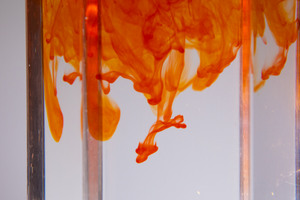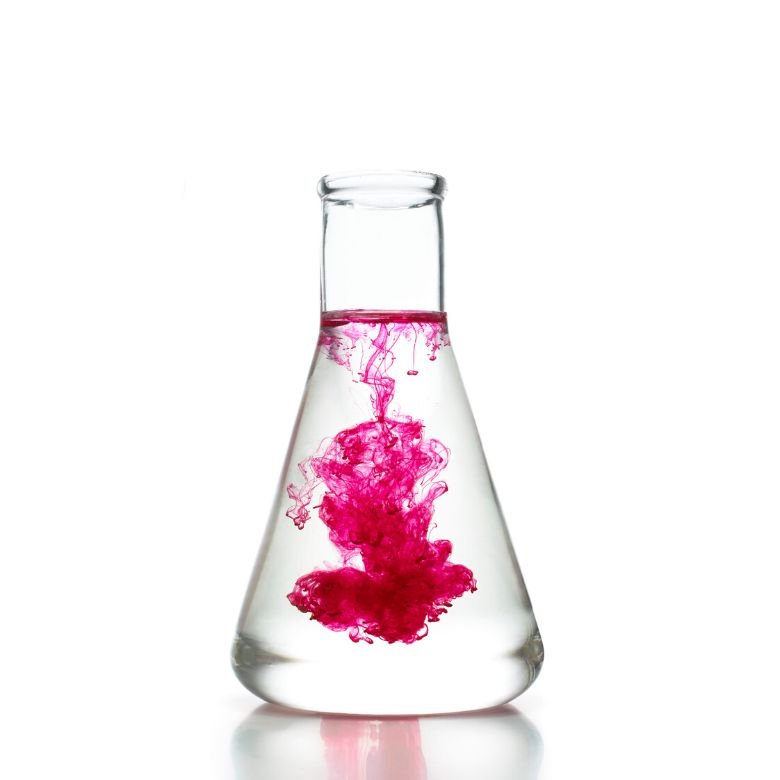The term “diffusion” describes the movement of energy or molecules/particles in a given medium as a result of their chaotic collisions with each other or with particles of the surrounding medium. Most often, we talk about diffusion in the context of molecular transfer caused by differences in concentration. Diffusion is a process commonly observed in nature, used by living matter. In addition, it plays an important role in many significant processes in various industries, such as metallurgy and ceramics, e.g. during phase transformations, sintering or phase coagulation. Diffusion is caused by various factors, e.g. gradients: concentration, temperature, pressure, external forces and the presence of an electric charge.

The classification of diffusion
The basic categorization is based on the physical state. According to this factor, we distinguish diffusion in solid, liquid and gaseous phases. Thinking of diffusing atoms, one may distinguish two categories. The first is chemical diffusion, occurring when the atoms of an element move relative to the matrix atoms. The second is self-diffusion, caused by the movements of atoms of the same kind relative to each other. Solid phase diffusion can be divided into:
- lattice diffusion, occurring in crystals that do not contain linear and surface defects,
- volumetric diffusion, when the crystal has dislocations,
- along the dislocation,
- along grain boundaries,
- surface diffusion on the free surface of the crystal.
The vacancy mechanism in diffusion
The phenomenon is based on the exchange of an atom with a vacancy, i.e. a point defect in the crystal lattice, which is also a node not filled with any atom or ion. The condition for the mechanism to occur is the presence of such sites, which in turn requires the delivery of adequate thermal energy. The potential barrier surrounding the atoms must also be disrupted, which also requires a certain amount of energy. The necessary energy, called the diffusion activation energy, is provided by thermal oscillations of the atoms. For this reason, the relation between the probability of a vacancy and its exchange with atoms, and temperature, is huge and increases exponentially. In the occurrence of this mechanism, besides the directed streams of diffusing atoms, vacancy streams directed in the opposite direction are also created.
The interstitial mechanism in diffusion
This type of mechanism assumes successive jumps of interstitial atoms with matrix atoms. Such atoms are those with small diameters compared to the matrix atoms. Jumps occur from one interatomic defect to an adjacent one. In every crystal lattice, even the densest one, there are two types of defects. Octahedral are larger defects, while tetrahedral are smaller defects. Using this mechanism diffusee.g. hydrogen, carbon, nitrogen or oxygen atoms. All but hydrogen have such large diameters relative to the defects that they exert compressive stresses in the lattice. The mechanism occurs much faster than the mechanism of vacancy diffusion, because the energy needed for its activation is up to a half lower. It does not depend on the presence of vacancies, but on the filling density of the lattice.
Grain boundary diffusion
Factors affecting the diffusion rate in solids
- The temperature is directly related to thermal oscillations of atoms. These, in turn, are responsible for delivering the energy needed for the jump of the atom from one node to the next. The diffusion rate increases with increasing temperature.
- The density of the defects is a factor determining the diffusion rate. In the case of dislocations and point defects, the higher their concentration, the higher the diffusion rate. The opposite is true in the case of defect complexes, which reduce the diffusion rate.
- An increase in the total pressure decreases the diffusion rate in systems located in an atmosphere that does not react with the material. Particularly great importance of the factor is observed at high pressures.

The mechanism of diffusion in solids
Atoms in solids, in crystals, constantly change their location. As diffusion we understand their migration in the crystal lattice. An atom can jump only if there is a free space in its vicinity and the atom itself has a sufficient activation energy. When considering the oscillations of atoms in the crystal lattice, it should be taken into account that:
- at temperatures above absolute zero, each atom oscillates with high frequency around its position.
- not every atom oscillates with the same frequency and amplitude at the same time,
- atoms have different energies
- the same atom can have a different energy at a different time,
- the energy of the atoms increases together with temperature.
Diffusion in solutions
Due to the fact that the molecules of both solvent and solute are in constant motion, their spreading leads to an even distribution of concentration throughout the volume. The concentration gradient is a factor that activates the diffusion and causes the flow of molecules, eliminating the concentration difference. Its velocity is directly proportional to the concentration gradient.
Gas diffusion
It is the fastest process in relation to other physical states. The spontaneous spreading of gas molecules is caused by molecular kinetic motion. The velocity is caused by the presence of large spaces between the particles, which can easily be occupied by other substances. An increase in temperature increases the diffusion rate even more by increasing the velocity of the free particles.
Fick’s laws of diffusion
Two laws introduced by Fick describe the diffusion process, regardless of the physical state:
- Fick’s first law describes the relation between the flux of a diffusing substance and its concentration gradient. The flux is the amount of a substance that moves in a unit of time through a unit of surface perpendicular to the flux.
- Fick’s second law describes the relation between the local rate of change in the concentration of a diffusing substance and its concentration gradient.
For each system, there is also a diffusion coefficient, which depends on the average velocity of the molecules, i.e. also on the temperature, and on the mean free path of the molecules.
Everyday examples of diffusion:
- Fast passage of odours in a room.
- The penetration of oxygen into the blood during breathing.
- Particles derived from tea leaves spreading in the vessel during brewing, up to the entire volume.
- Dyeing of fibres – spreading of ink/pigment.
- Spreading of flavours and aromas during seasoning.